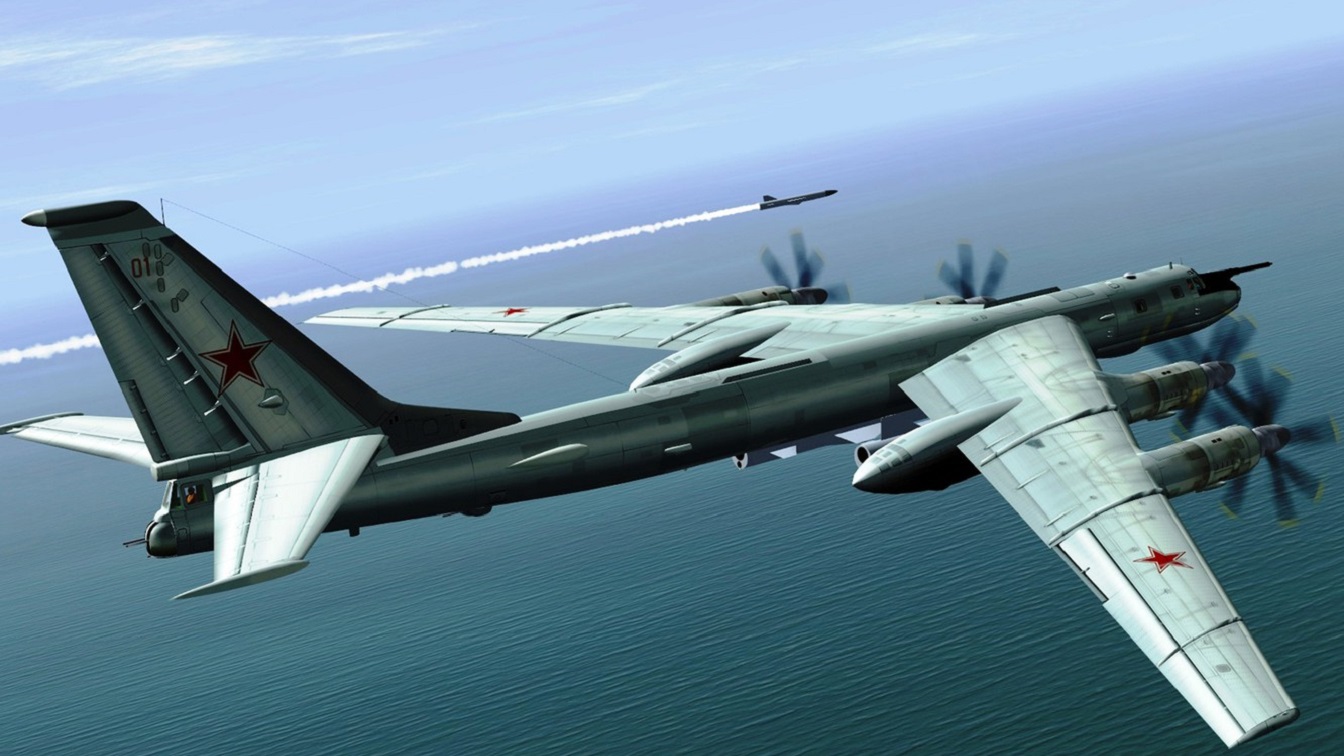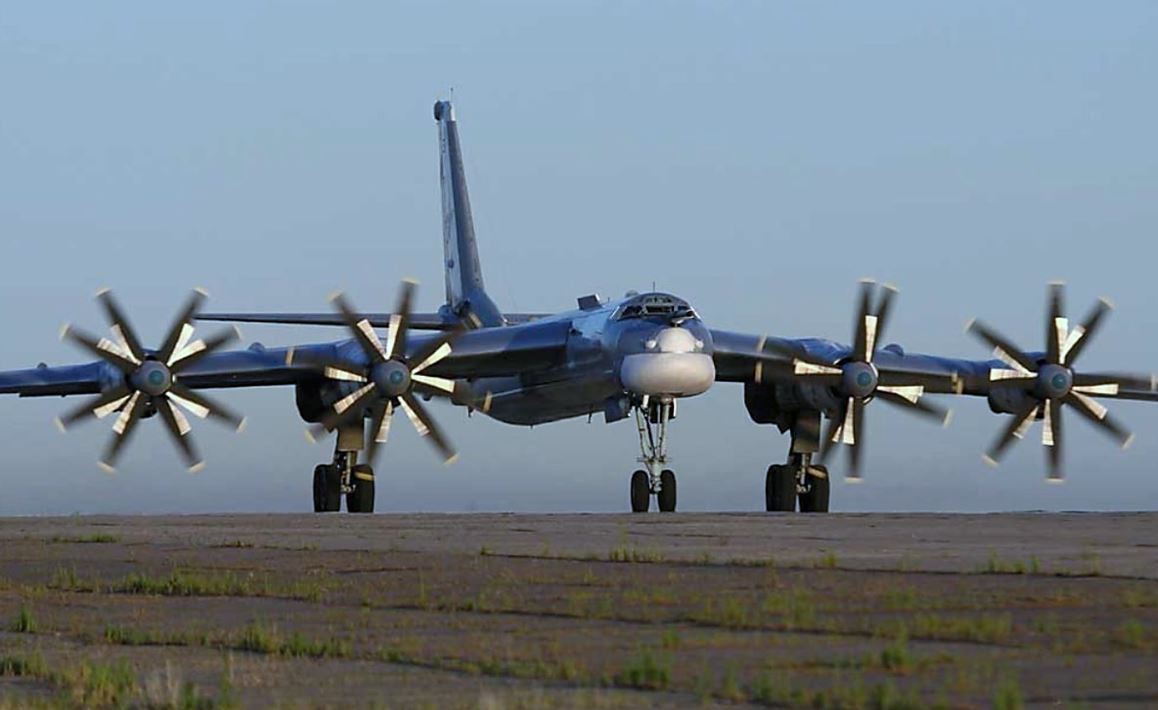Bear Russian Bomber - It's old, it's obvious, and it has mechanical problems - facts that are hard to ignore, while the Tu-95 plays a key role in the Kremlin's highly musical and exaggerated efforts to impress its foreign rivals.
At first glance, Russia's Tu-95 Bear strategic bomber looks like a 59-year-old aviation anachronism, a Cold War relic that has outlived its usefulness in an era when stealth was king.
Bear Russian Bomber

Showing signs of its age. In recent months, two Tu-95 crashes have forced the entire fleet of more than 50 aircraft to deal with mechanical issues. Moreover, there is nothing secret about Medvedik.
Russian Bombers Intercepted Off U.s. Coast
Even when the bomber is in top form, the Tu-95 turboprop sounds very loud. In fact, it's so loud that listening devices on US submarines can hear a bear flying overhead.
Photographs of bulky Bear-H bombers intercepted by sleek US or NATO fighter jets as they flew towards protected airspace are some of the most recognizable images of the nuclear conflict between East and West in the 1970s and 80s.
But Andrei Tupolev, the aviation genius of the Cold War era, was no fool. He has designed a customizable aircraft that can carry one hell of a load in terms of bombs and missiles, fly thousands of miles from bases in Russia, roam the edges of enemy airspace, and deliver megatons of nuclear damage.
Recently, on July 4, several "Bear" bombers flew to US air defense identification zones near California and Alaska. In fact, some bears have flown within 40 miles of the California coast.
Stella & Rose's Books
Technically, the bombers were still in international airspace. But call it Cold War 2.0 - the Kremlin sends the same thing as a bomber.
"The Tu-95's current missions are completely planned and aimed primarily at appealing to Russian pride and national identity," said Scott Palmer, professor of history at Western Illinois University and author of the book
In 1956, the Soviet Air Force wanted to replace the Tu-4 "Bull", the Soviet Union's first nuclear bomber. The Bull was a copy of the B-29 - Tupolev was used in an accident and buried B-29s as the basis of its design.

But even though it was a clone of the same type of plane that dropped nuclear weapons on Hiroshima and Nagasaki, the Bull did not have the necessary range to hit targets in the United States if it had flown from Russia.
De Onvermoeibare Russische 'bear': De Tu 95
The new Soviet bomber was to have a range of at least 5,000 miles and carry a nine-ton bomb load.
Tupolev's new construction was large even by the standards of the time. The Bear's narrow fuselage is over 150 feet long with a wingspan of 164 feet. Furthermore, the wings are swept back at an angle of 35 degrees to reduce drag.
In addition, "Bear" has a range of 9,000 miles without refueling. Because it was originally designed to carry nuclear gravity bombs from the 1950s, it has a large bomb bay and plenty of wing space for newly added hardpoints.
Today, this means that the modified Tu-95MS can carry 16 AS-15 Kent cruise missiles - six internally in the MKU 5-6 rotary launcher and 10 on the outer wing pylons. Each missile is capable of carrying 200-kiloton nuclear warheads, about 10 times the power of the atomic bomb that destroyed Nagasaki.
Tupolev Tu 95 Bear
Last year, Russia upgraded eight Tu-95s to cruise missile status, and 10 modified Bears are expected to be deployed by 2016.
During the 1950s, the real technical innovation was the 14,000 horsepower Bear turboprop engines. The four Kuznetsov NK-12M engines with two opposing propellers are each the most powerful turboprop engines in the world.
In fact, the engines are so powerful that the tips of the 20ft propellers break the sound barrier when the pilot increases the throttle - one of the reasons why the plane is so deafeningly loud.
/https://tf-cmsv2-smithsonianmag-media.s3.amazonaws.com/filer/ff/88/ff887bcd-3005-4d68-8d22-e12f2fefc95f/17a_dj2015_thesandwich_live.jpg)
Although noisy, Medvedya's crew of seven can operate several variants of the Tu-95, designed not only for strategic bombing, but also for maritime patrol and photo reconnaissance. There was even a version used as a passenger plane, and a specially modified Medved dropped the Tsar Bomba - the world's most powerful nuclear bomb ever detonated - during its Soviet test explosion in 1961.
Russian Bombers Fly Over Waters Along Aleutian Islands
Hans M. Christensen, director of the Nuclear Information Project at the Federation of American Scientists, told War Is Boring that the Russian Federation has little choice.
Russia's defense industry declined after the fall of the Soviet Union and has not recovered enough to support the new bomber program, Christensen said. The Russians are developing a next-generation jet bomber that is expected to begin test flights in the early 2020s, but it remains to be seen what they will be able to build and how quickly it can be deployed.
"In general, airplanes can fly for a very long time as long as there are spare parts," he said. "In general, propeller engines are less complicated to operate than jet engines, and many modern types of aircraft also use propellers."
"Furthermore, while the Bear will not last long against a modern air defense system, it has long-range cruise missiles that provide significant countermeasures." Therefore, at the moment, "Bear" serves Russia's needs in anti-aircraft weapons, signals and national prestige."
F 4 Phantom Intercepting Tu 95 Bear Bomber
It may have its flaws, but the Bear bomber will remain strong as a weapons platform and as a symbol of Russian power for many years to come. Even with plans to build a jet bomber within the next decade, the upgrade will allow the Cold War giant to continue flying into the 2040s.
But it's just as hard to ignore a bomber that can fly within a few miles of your coast, armed with nuclear-tipped cruise missiles.
"The Tu-95 is an aviation anachronism," Palmer said, "although it remains an important element of Russian strategic aviation." ) is a large strategic bomber and missile platform with four engines and a turboprop engine. First flown in 1952, the Tu-95 entered service with the Long Range Aviation of the Soviet Air Force in 1956 and was first used in combat in 2015. It is expected to serve in the Russian Aerospace Forces until at least 2040.

The development of a bomber for maritime patrol was named Tu-142, and a derivative of passenger ships - Tu-114.
U.s. Military Jets Intercept Russian Bombers Off Alaskan Coast
The aircraft has four Kuznyatsov NK-12 engines with counter-rotating propellers. It is the only rotary-wing strategic bomber still in service today. The Tu-95 is one of the strongest military aircraft, especially because the tips of the propellers move faster than the speed of sound.
Its characteristic arrow-like wings are positioned at an angle of 35°. The Tu-95 is the only swept wing propeller aircraft built in large numbers.
The design center headed by Andrei Tupolev designed the first intercontinental bomber in the Soviet Union, the Tu-85 model in 1949, a larger version of the Tu-4, a copy of the Boeing B-29 Superfortress.
In 1950, the Tupolev and Myasishchev design center was given a new requirement: the proposed bomber had to have a range of 8,000 km (5,000 miles) without refueling, which was enough to threaten key targets in the United States . Other objectives included the ability to carry a payload of 11,000 kg (24,000 lb) over the target.
Norad: Russians Stay In Airspace 'for Hours' During Flight Operations Near Alaska
Tupolev was faced with the choice of a suitable type of power plant: the Tu-4 showed that piston engines were not powerful for such a large aircraft, and the AM-3 jet engines for the T-4 intercontinental jet bomber planned to eat too much. fuel to give the necessary range.
Turboprop engines were more powerful than piston engines and provided a better range than the turbojet engines available at the time, and provided top speeds in between. Turboprop engines were also initially selected for the Boeing B-52 Stratofortress to meet long range requirements,
And for the British long-haul transport aircraft Saunders-Roe Princess, Bristol Brabazon Mk 2 and Bristol Britannia.
Tupolev proposed a turboprop installation, and the Tu-95 project in this configuration was officially approved by the government on July 11, 1951. Four Kuznetsov aircraft were used in it.
Raf Jets Scramble To Intercept Russian Bombers Over North Sea
Twin turboprop engine, each with two counter-rotating four-bladed propellers, rated at 8,900 kW (12,000 hp). Modern for its time, the gin was developed by a German group of former Junkers engineering prisoners led by Ferdinand Brandner. The fuselage was conventional with a center wing mounted with a 35 degree flare, an angle which allowed the main wing spar to pass through the fuselage in front of the bomb bay. Retractable three-wheel landing gear was fitted, with the three gear assemblies retracting backwards and the main gears retracting into the engine's internal nacelles lugs.
The Tu-95/I with 2TV-2F engines made its first flight in November 1952 with test pilot Alexey Peralet at the helm.
After six months of test flights, this aircraft suffered a propeller gearbox failure and crashed, killing Perelet. The second aircraft, the Tu-95/II, used four 12,000 hp Kuznetsov NK-12 turboprop engines, which proved more reliable than the captured 2TV-2F. After a successful period of flight testing, mass production of the Tu-95 began in January 1956.
For a long time, the Tu-95 was known to US/NATO intelligence as the Tu-20. While it was the original Soviet Air Force
Air Force Jets Intercept 2 Russian Bombers Flying Close To Alaska
Bomber bear, russian bear hot tent, russian bear bomber intercept, russian bear tent, russian bear market tent, russian bear bomber tu 142, russian bomber bear, russian bear bomber vs b 52, russian bear winter tent, bomber russian, russian bear protein, russian bear stove


0 Comments